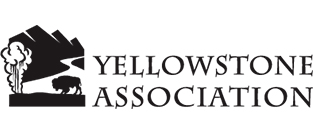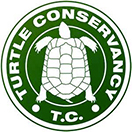Until 2018, companies benefited from a reduced corporate tax rate on the sale, concession and sub-concession of eligible intellectual property assets: either a reduced rate of 15.5% (Article 39 terdecies of the French General Tax Code), or a unique rate of 12.8%, plus social contributions, if they were liable to the income tax regime.
France’s favorable tax system has been thoroughly re-examined in the 2019 Finance Bill in an effort to render it compatible with the OECD’s recommendations to link the intellectual property revenue with the Research & Development activities that have generated it (L 2018-1317 of 28 December 2018, Article 37).
COMPATIBILITY WITH THE OECD’S “NEXUS” APPROACH
The new article 238 of the French General Tax Code (CGI) adopts the OECD’s so-called “nexus” approach that aligns R&D expenditures with the conferment of tax benefits (the former article 39 terdecies, 1, of the CGI was deleted).
The new favourable tax system is conditional upon the exercise of an option and differs from the previous regime in two main aspects:
- The benefit eligible for the preferential treatment is no longer the net benefit of the sale (the capital gain) or the concession (products minus management fees), but rather the brut revenue drawn from the assets, minus any R&D expenditure incurred to develop the IP asset in that same period of time.
- More importantly, the “nexus ratio” applied apportions income according to a ratio of expenditures: it determines what income may receive tax benefits by calculating the ratio of qualifying to overall expenditures incurred to develop the IP asset. It intends to ensure that the IP income that benefits from the regime is linked back to the entity that has incurred the R&D expenditures by contributing to that IP.
NEW REDUCED TAX RATE
The new tax rate is lowered to 10 percent for corporate companies, and also for inventors (natural, and not legal, persons), who were until then subject to a tax rate of 12,8%.
This lowering of the tax rate was justified by a reduction of the taxable base subject to the favourable tax system. The objective was to guarantee companies competitive opportunity, “without falling into the trap of entering a race to the bottom” on corporate taxation, as said by Mr Noël Giraud, the General rapporteur of the French National Assembly.
INCLUSION OF NON-PATENTED BUT PATENTABLE INVENTIONS
The 2019 Finance Bill has made non-patented, but patentable, inventions eligible under the following two cumulative conditions:
- The invention’s patentability must be certified by the National Industrial Property Institute (INPI);
- The business in question must be a small to mid-size enterprise (SME).
INCLUSION OF ORIGINAL SOFTWARE
The framework laid out in article 238 of the French General Tax Code (CGI) is also applicable to software with protected copyrights, as intended in 13° of Article L.112-2 of the French Intellectual Property Code (CPI). This includes software preparatory design material.
To enjoy the protection afforded by this Code, the software must be original in character.
DOCUMENTARY OBLIGATION
The application of this new regime is accompanied with a requirement of documentation introduced by article L. 13 BA of the French Tax Procedure Code (Livre des procédures fiscales). This unprecedented obligation is intended to provide the administrative body with all the relevant information on the benefits drawn by the asset from the preferential tax regime and the expenses incurred while working in the R&D sector.
This documentation must be available to the administration at the date of the accountability inspection, if need be.
Article 740-0 C has been added to the French General Tax Code to impose a sanction, more precisely a fine of 5 % of the revenue subject to the reduced tax rate, if this obligation is not respected.
SPECIFIC CONDITIONS WITHIN A TAX GROUP
In application of the provisions of article 223 H of the French General Tax Code, the new regime is applicable to the tax group as a whole rather than to each member company. The option is exercised by the parent company.
For each asset or group of assets owned by or under the concession of a company, the sale, concession and sub-concession net result, as well as the corresponding “nexus ratio”, are calculated at the level of the tax group to which the company belongs.
The parent company, and not its subsidiaries, is responsible for providing the tax declaration and for fulfilling the documentary obligations. However, the overall result declared by the parent company must detail the amount of gross revenue received from and the amount of eligible expenses incurred by each company in the group.
UNDETERMINED BUDGETARY IMPACT
The budgetary impact of the reform has not been estimated since the extent of the consequences of the changes brought to the favourable tax system vary considerably from one company to another.
For instance, the cost of the preceding tax arrangements under Article 39 terdecies amounted to 663 million of euros in 2017 and 365 million of euros in 2018. The annual average amounted to 456 million of euros between 2012 and 2018.
The General rapporteur, Mr Joël Giraud, highlighted in his report that the shrinking of the tax base as a result of the “nexus” approach could result in a net gain for the state in comparison with the current situation, despite the inclusion of software and the 10% tax rate.
In addition, Mr Albéric de Montgolfier, the rapporteur of the 2019 Finance Bill of the Senate, said that “there is no reason to think that the adoption of the new regime leads to a massive loss of France’s attractiveness in regard to Research and Development activities, notably thanks to the existence of the Research Tax Credit (CIR).”





